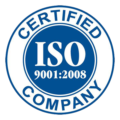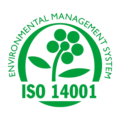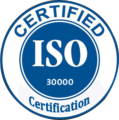| 船厂简介 |
The ship dismantling sector is a sector which takes and dismantles ships which completed their economic life and provides the sale of all the dismantled parts which can be reused and contributes the national economy.
Also it contributes to reduce risks if we think about that ships with advanced technology and new tonnage were build instead of the dismantled ships.
According to the data in 2013, the world trade in the seas is around 86.492 vessels.
Statistically if we consider the environmental damages of ships over 15 years of age the ship dismantling sector is taken a natural place like the ship construction sector.
Beginning from 2011 starting to take single hull tankers gradually from sailing and by considering the age of the merchant fleets (average 24.5) a high-volume steel recycling of waste is becoming inevitable.
The main objective of the sector is the recycling of any kind of ship dismantling scrap, mineral and waste of the ship equipment.
It is theinverse procedure of Shipbuilding. During the dismantling of the vessel as scrap, metal materials are evaluated directly or sent to mill.
Ship Recycling converts scrap to valuable goods and recycles used natural resources.
On the other hand Ship Recycling holds its place between industries which protect the environment.
For the purpose of effective and efficient use of natural resources, scrap vessels will be dismantled and processed to obtain various products.
The Ship Recycling plays an active role in maintaining the ecological balance and IMO International Maritime Organization accepted it and it is also known as'' green industry''.
Comparing the iron ore extraction from the nature with smelting and rolling you can see that ship recycling provides huge energy and cost savings and less pollution.
The alternative for steel production from scrap ships is the produce this from iron ores. Pig iron is produced first in blast furnaces, later it will be converted to steel.
Three kinds of raw materials is used to produce pig iron in blast furnaces. These are Iron ore, coke and limestone. Each of the three raw materials are produced out of the furnaces above earth ground, this devastates the large earth.
Coke is produced out of converted coal with appropriate specifications.
Coke turns partly to carbondioxide and partly to iron carbide. But during the steel obtaining process of iron carbide, carbon dioxide is released to the atmosphere.
Producing steel out of scrap iron is considered as an environmentally friendly technology.
With the recycling of 1 ton steel and 1100 kg iron ore, 630 kilograms of coal and 55 kilograms limestone are saved.
If we look from the perspective of energy consumptionwe can see that the converting 1 ton hematite ore to pig iron consumes energy of 7400 mj. Melting 1 ton steel scrap consumes energy of 1350mj.After these processes 2200 kg CO2 is released to the atmosphere but with melting 1 ton scrap steel this releasement is only 280 kg.
For the preparation of electric energy, this amount will be reduced by increasing the use of natural energy sources,
When scrap steel is recycled 74% of energy, 90% of raw material resources are protected, 40% of water consumption is reduced, 76% in waste water pollution, 86% of air pollution, 97% of mining waste reduction was observed.更多信息
|
|





